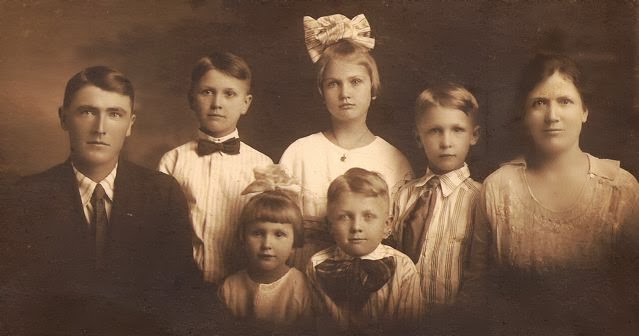The town of Winside,
Nebraska got it's name because of a dispute with the railroad over where to run
the tracks. Owner of 800 acres located at Northside, Nebraska, H. N. Moore
wanted the tracks to come to his town, already established about 3 1/2 miles
from the present location of Winside. Despite his influence and the efforts of
other Northside citizens, the railroad officials decided the land around
Northside was too hilly and situated too far from Wayne. They wanted to space
towns every eight miles along the track, so they chose a lower, flatter location
that filled that bill.1
Of course, landowners at that
site, particularly, Dr. R. B. Crawford, had been lobbying to bring the railroad
there. A legal dispute ensued, and the railroad compromised with the Northside
folks by agreeing to move some of the businesses to the new site, businesses Northside
citizens had built in anticipation of the trade the railroad would bring. The
new town was platted and recorded on 14 June 1886. Dr. Crawford, said it would
"be called 'Winside' because it was bound to win and would gradually kill
off the old town of Northside."2
About thirty years after this
dispute, my grandparents, Clint and Mary Troutman, moved their family to Wayne
County, about ten miles southwest of Wayne, the county seat, and eight miles southeast
of Winside. The town was well established by then, the wide main street a pleasing
feature. In addition to many businesses, the town boasted its own salaried
baseball team, a city band, a volunteer fire department, a newspaper (The Winside Tribune), a water system, a telephone company, a public library, a
farmer’s union cooperative, and so on.3
A light plant brought electricity, and the first lights turned on in the Fleer
Brothers store in 1912.4
Electric streetlights replaced gasoline lanterns by 1915.5
By 1920, Winside’s population peaked at 488 people.6
Living on a farm some distance
away, my grandparents experienced none of the amenities found in Winside, however—no
indoor plumbing, no electricity, no central heating, and so on. Only when they drove to town for supplies could they experience such modernities. About 1924 when they
moved a mile and a half north of Winside, they began to benefit from town life.
They moved so the children could go to high school. That farm was my dad’s
favorite place of all they had lived.7
It was the place I remember as my grandparents’ farm.
1 F.
M. Jones and F. J. Dimmel, The History of
Winside, Nebraska: Northside, Railroad, Growth and Development—Winside,
Settlement and Growth to the Present (N. p.: n.p., 1942), pp. 8-9.
2
Ibid, pp. 9- 10.
3
Ibid., 64-82.
4
Ibid., pp. 74-75.
5
Ibid, pp. 74.
6
Ibid., p. 249.
7 Verne
Troutman, “Grandpa Verne’s Story,” edited by Z. T. Noble, personal computer files, documents, “Dad’s Story2.”


No comments:
Post a Comment